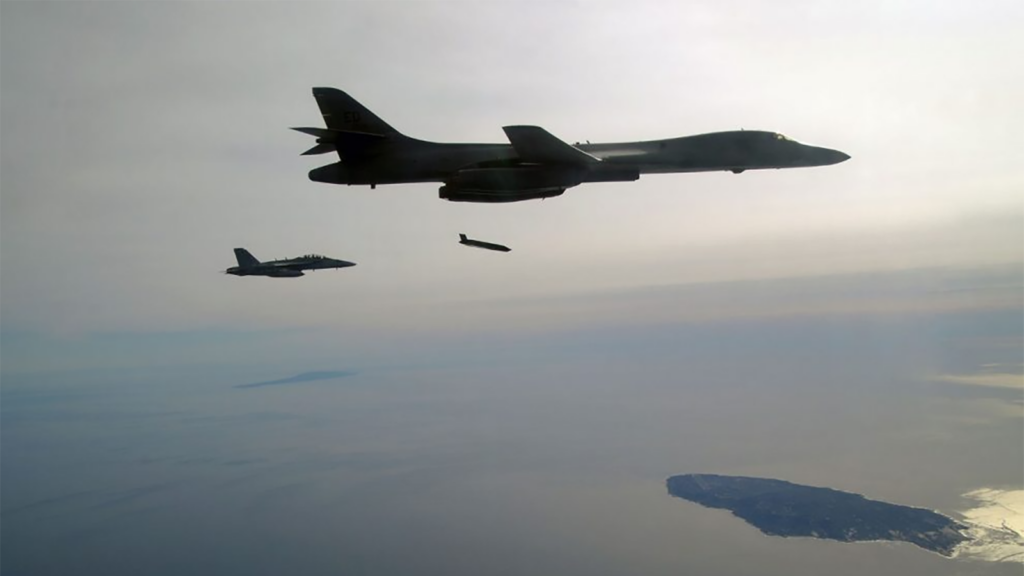
Lockheed Martin’s Long Range Anti-Ship Missile (LRASM) is the predecessor to the Navy’s HALO program. (Credit Lockheed Martin)
Updated 3/29/2023 at 11:30 AM EDT with comment from Lockheed Martin.
WASHINGTON — The US Navy has tapped Lockheed Martin and Raytheon to begin developing their own prototypes of a ship-killing, air-launched hypersonic weapon with the companies producing preliminary designs by the end of 2024 and, eventually, a prototype test flight.
The Tuesday night announcement by Naval Air Systems Command, the service’s chief agency for procuring aircraft and their associated weapons, said both companies received contracts “valued at a total of $116 million” for the “first step to fielding a critical capability over the next decade that will address advanced threats and allow the Navy to operate in and control contested battle space in littoral waters and anti-access/area denial environments.”
The weapon itself has been dubbed the Hypersonic Air Launched Offensive Anti-Surface, or HALO, and is the follow-on program to the Long Range Anti-Ship Missile, which was produced by Lockheed Martin and is currently fielded on the Navy’s F/A-18 and the Air Force’s B-1B.
“As threat capability continues to advance, additional range, warfare capability and capacity is required to address the more demanding threat environment,” said Capt. Richard Gensley, precision strike weapons program manager. “Our team is leveraging science and technology and rapid prototyping arenas to support aggressive schedule execution.”
“To bridge the gap until HALO is operational, the Navy recently funded an upgrade to the existing weapon which will incorporate missile hardware and software improvements to enhance targeting capabilities,” according to the Navy’s announcement.
The new weapon’s fielding is planned for “later this decade,” the statement added.
Scott Fisher, director of air dominance and strike weapons advanced programs at Lockheed Martin, told Breaking Defense today the company “looks forward to partnering with the Navy to rapidly get a carrier-based hypersonic strike capability to the fleet. Our HALO team offers industry-leading expertise in hypersonics, missile integration and anti-surface warfare, and we’re on a fast track to first flight and fielding HALO.”
A spokesperson for Raytheon did not immediately respond to requests for comment from Breaking Defense.
HALO is one of a handful of new hypersonic weapons the Pentagon is developing and fielding. The Navy’s program of choice for both the Zumwalt-class destroyers and the Virginia-class submarines is the Conventional Prompt Strike program, which plans to begin purchasing all-up-rounds in fiscal 2024.
The Army is fielding its own land-based variant of Conventional Prompt Strike derived from the same core technologies. Meanwhile the Air Force is moving forward with two separate hypersonic programs: the Hypersonic Attack Cruise Missile and the Air-Launched Rapid Response Weapon.
Taking aim: Army leaders ponder mix of precision munitions vs conventional
Three four-star US Army generals this week weighed in with their opinions about finding the right balance between conventional and high-tech munitions – but the answers aren’t easy.


























